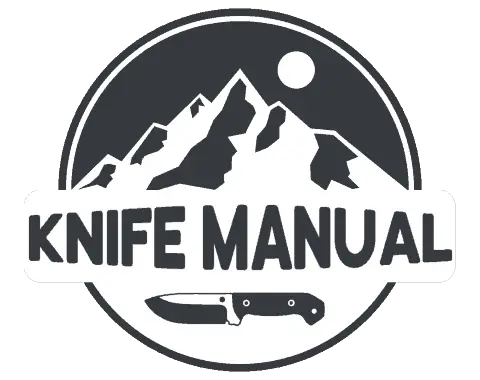Whether you’ve been a knife enthusiast for a while or you’re just getting into knives, the amount of jargon that gets thrown around in the knife community can be pretty confusing and daunting. One incredibly confusing term for beginners is “tang,” so let’s look at what it means and the different types of knife tang.
Tang is the rear portion of a blade that extends into the handle material. Generally, there are two major categories of knife tang: full and partial. Within the two major categories of tang, there are variations such as extended tang, skeletonized tang, rat-tailed tang, and through tang.
Even that quick explanation of tang can be confusing, so let’s take a more in-depth look at what exactly tang is in a knife and the different types.
Table of Contents
What is Knife Tang?
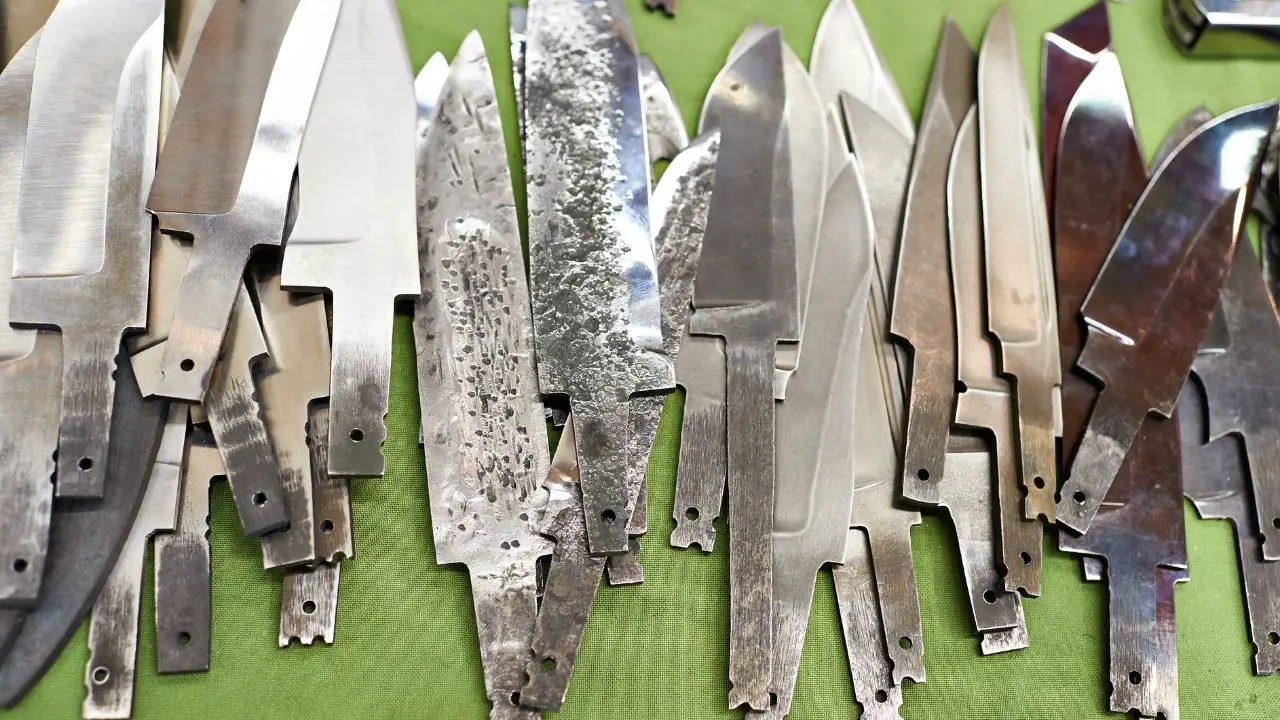
In its simplest form, a typical knife is composed of a blade and handle. The blade is the sharp, metal cutting portion of the knife, while the handle is the non-cutting portion that you grasp while using the knife.
Contrary to what some people think, the blade of a knife doesn’t typically end where the handle begins. Instead, the blade extends into the handle for additional support.
The portion of the blade that extends into the handle of a knife is known as the tang. Tang isn’t exclusive to knives either; most bladed items such as screwdrivers, swords, chisels, and machetes also have tang.
The portion of a knife that extends into the handle, known as tang, serves many functions. However, a knife’s tang is primarily there to ensure the blade remains stable and offers support to the structural integrity of the tool.
Types of Knife Tang
As you can imagine, with the wide variety of knife designs out there, there are many different types and styles of tang. The two main categories of knife tang, full and partial, have many variants and subcategories.
In the following sections, I’ll discuss the advantages, disadvantages, construction methods, and uses of each type of knife tang.
Full Tang
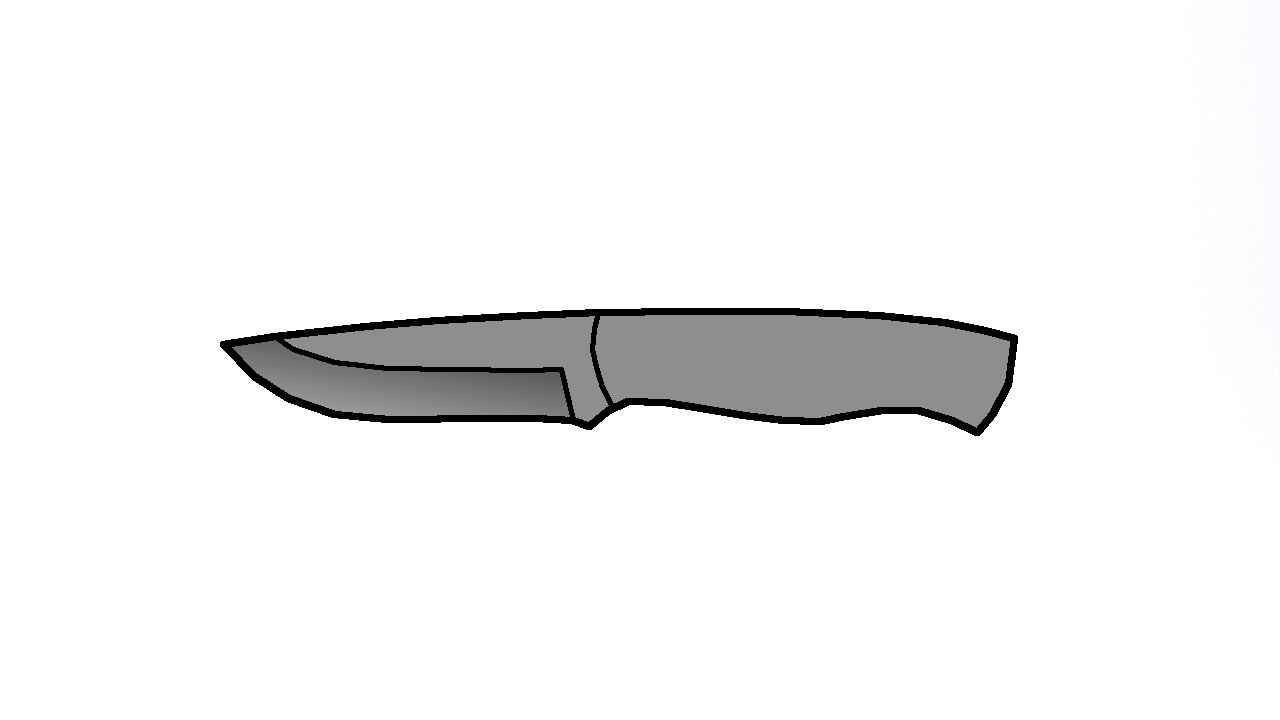
Full tang is when a knife’s tang extends to the end of the knife’s handle. Admittedly, sometimes the tang is just short of the end of the handle, but many still consider that to be full tang in most cases.
Truly classic full tang knives have tang that is the same length and width as the handle. You can usually see the tang on a full tang knife, which is typically sandwiched between two knife scales (make sure to check out my article on knife scales if you want more information).
if you want more information).
Advantages
One of the most significant advantages of full tang knives is their stability and durability. Because the tang on a full tang knife extends throughout the handle, there are fewer stress points in the metal, which have a high chance of breaking while using the knife.
When you hold a full tang knife, you’re also gripping a large portion of the tang, allowing for more stability and control.
Disadvantages
There are very few disadvantages to full tang knives. However, they are often more expensive, heavier, and the exposed tang between scales can be cold and uncomfortable if the temperature is cold. If not correctly cared for, full tang knives can also corrode and rust easily.
Construction Method
Generally, full tang knives are constructed using two knife scales sandwiching the tang and held in place by pins or rivets. There are various ways to make a full tang knife, such as molding the handle material around the tang, wrapping the tang, and many other methods.
Uses
Due to their stability and durability, many people prefer to use full tang knives for outdoor purposes and other demanding situations where a durable and robust knife is needed.
Extended Tang
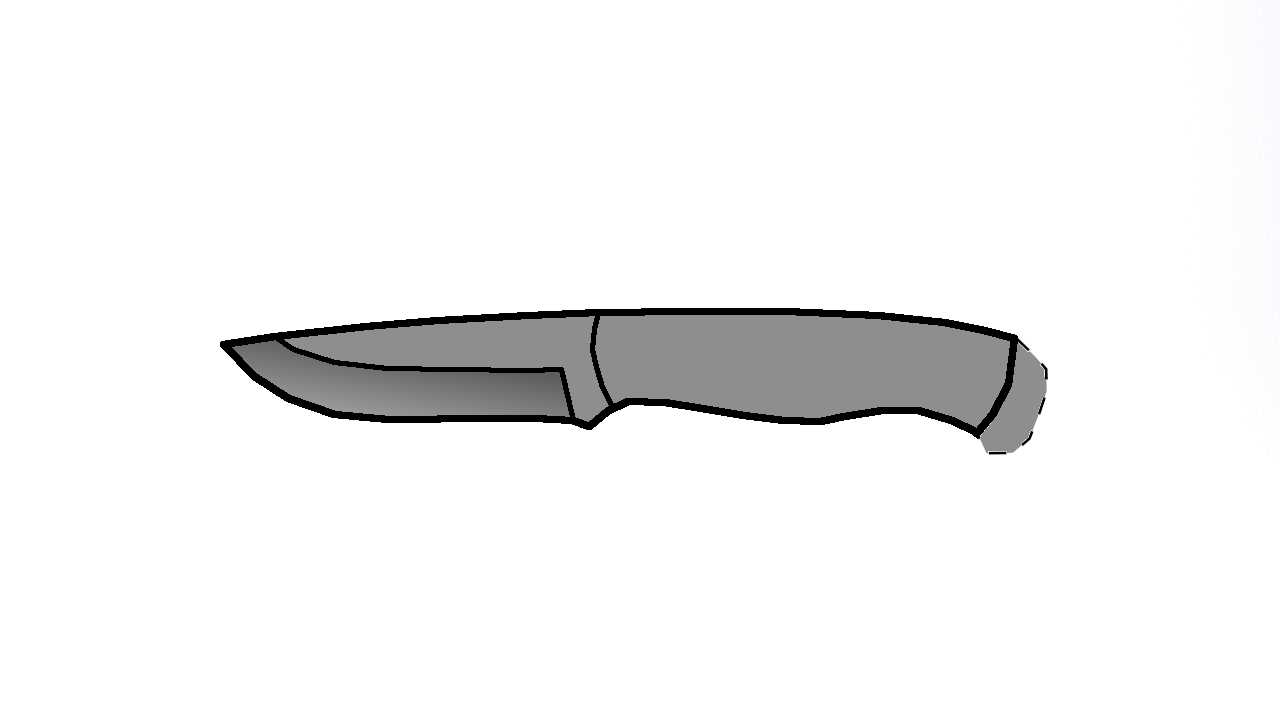
Extended tang is a type of full tang that reaches beyond the end of the knife’s handle. The tang extends past the handle material at the end of a knife to form a pommel or lanyard hole.
Advantages
Extended tang extends throughout the entire handle of a knife, which provides extreme stability and strength to the tool. The portion of tang that protrudes beyond the butt of the knife also allows you to hammer some small things.
Disadvantages
Because extended tang extends throughout the entire handle and beyond, one disadvantage is that it often results in a heavier knife because of all the additional metal. Some people also find the extended portion of the tang beyond the handle material to be annoying and get in the way, but that is usually not an issue.
Construction Method
Knifemakers construct extended tang knives using various methods, including sandwiching the tang between scales or encapsulating it in the handle material.
Uses
Extended tang knives are great for survival and outdoor activities where an extremely sturdy knife is needed. You can use the portion of tang that extends from the butt of the knife to hammer small things such as tent stakes, baton small sticks, or crack difficult-to-open nuts.
Skeletonized Tang
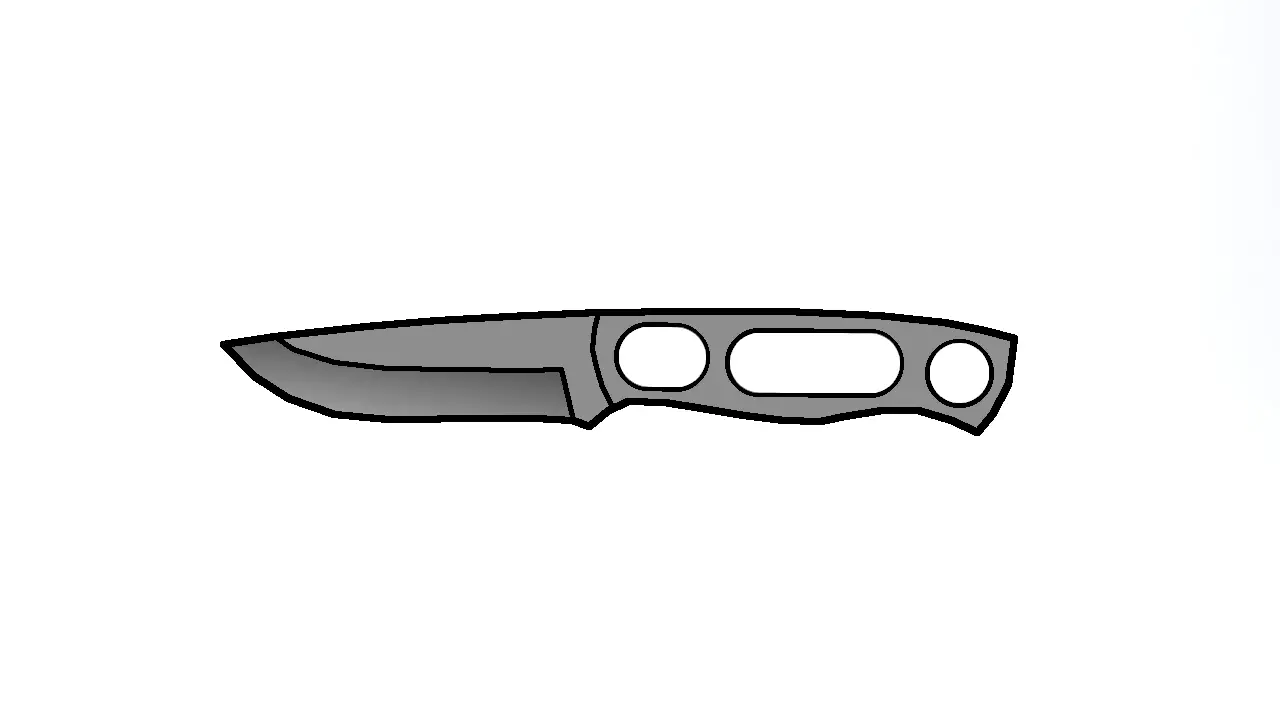
Skeletonized tang is a type of full tang that extends throughout the handle of a knife, but it has portions removed from the center. Some people prefer to use their skeletonized tang without a handle, but the design lends itself well to paracord-wrapped grips.
Advantages
There are many advantages to skeletonized tang. Most notably, skeletonized tang is lighter and gives you options for different paracord handle wraps.
Disadvantages
Skeletonized tang has cutout portions that, while they do make the knife lighter, create additional stress points that undermine some of the knife’s structural strength. High-quality skeletonized tang knives are very robust, but lower-quality knives can suffer from strength issues with this type of tang.
Construction Method
Typically, knifemakers create skeletonized tang knives from a single piece of steel and cut out the holes in the tang.
Uses
Skeletonized tang knives are great for instances where the weight of your knife is a factor. Additionally, they are excellent for situations where you’ll use your knife a lot because you can easily change out the handle material on this style of knife.
Encapsulated Tang
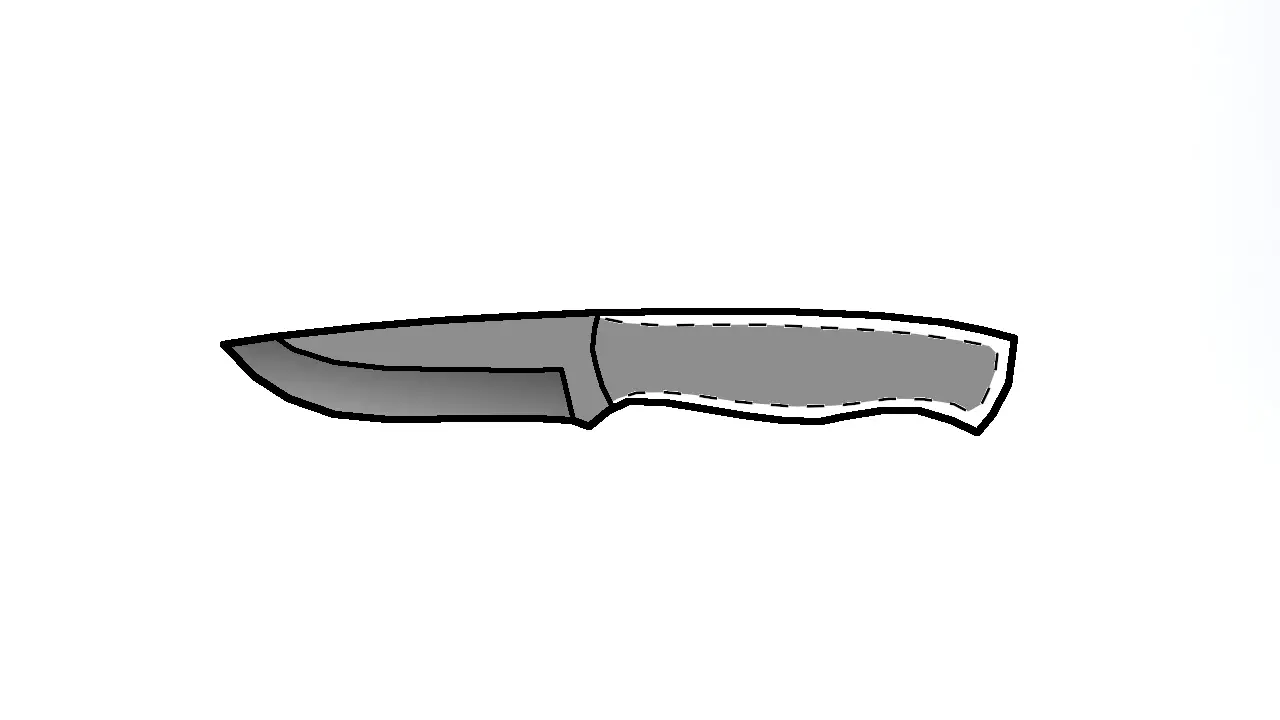
Encapsulated tang is when a knife’s handle material is molded around the tang instead of being pushed or riveted into place.
Advantages
The handle material is molded directly around the tang of an encapsulated tang knife, ensuring nothing comes loose and gives the knife an extra level of precision. Encapsulated tang is also extremely strong and mitigates any stress points where the blade meets the handle material.
Disadvantages
There are very few user disadvantages to encapsulated tang. One limitation to this type of knife is that not all handle materials can be molded around the tang of a knife, limiting it to the few natural moldable materials and synthetic handle materials.
Construction Method
There are many methods for creating an encapsulated tang knife, but one of the most common ways is to fill a mold with the handle material, insert the knife tang into the mold, let set, and then remove the mold.
Uses
Encapsulated tang knives are extremely popular among the outdoor crowd, especially hunters. They are very strong, sturdy, and allow for excellent precision when cutting.
Hidden/Through Tang
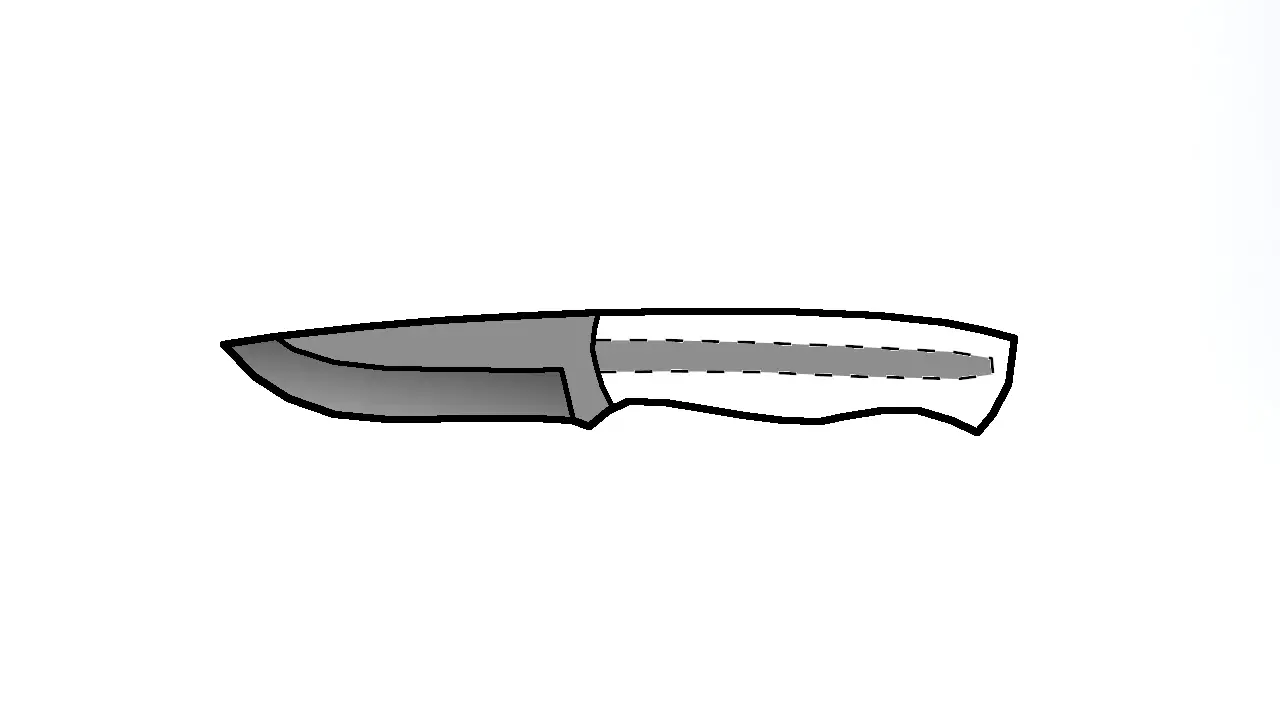
Much like its name suggests, the tang on a hidden tang knife is covered entirely by the handle material. Hidden tang is sometimes also called through tang.
Advantages
Hidden tang knives are generally pretty good all around. Hidden tang doesn’t create any significant stress points in the handle, it is very sturdy, and it is pretty stylish.
Disadvantages
While hidden tang knives are pretty good, there are a few cons that you should be aware of about them. Hidden tang knives are usually more expensive (because they are typically handmade and not factory-made), and the handle material can come loose from the tang on rare occasions.
Construction Method
Hidden tang knives are usually made by sliding the tang into a preconstructed handle and holding it in place using epoxy or a pommel. This type of handle often takes longer to make, so you’ll often find it on handmade knives more often than on factory-made ones.
Uses
While popular on handmade knives meant for show more than use, hidden tang knives still have their place in everyday use or outdoor knives.
Partial Tang
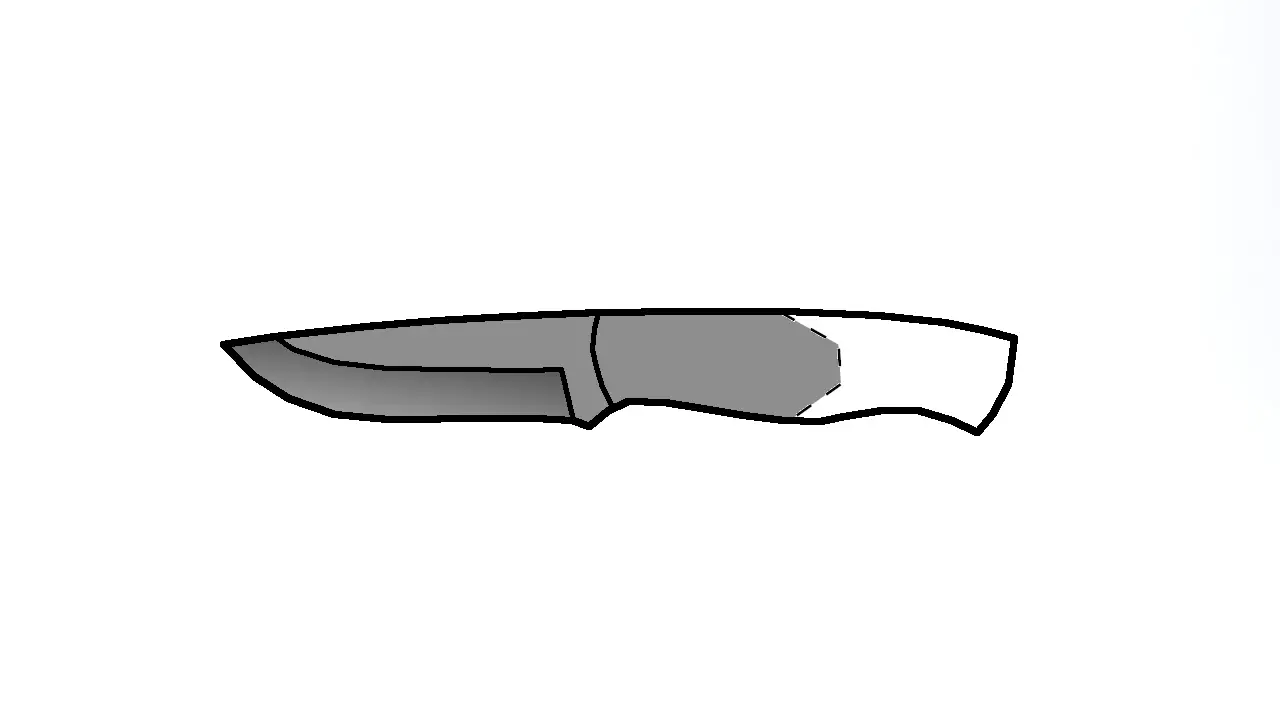
Partial tang is a pretty broad category, but its defining feature is that the tang only extends partially into the handle material. Depending on the type of partial tang, it can extend less than halfway, exactly halfway, or past the halfway mark, but it’s always less than full tang.
Advantages
When it comes to partial tang knives, there are two main advantages: weight and design. Since the tang only extends partially into the handle on a partial tang knife, there is less metal, and subsequently, it typically weighs less than a full tang knife.
Partial tang also allows for interesting handle designs that otherwise would be impossible, as well as folding knives.
Disadvantages
The primary disadvantage to partial tang is its strength. Partial tang is simply less strong, sturdy, and robust than full tang, though it can be pretty good when done well.
Construction Method
There are tons of different variants and styles of partial tang knives, and as a result, there are many different construction methods.
Uses
You can use partial tang knives in nearly any knife-appropriate situation, but they work exceptionally well for everyday carry, cooking, camping, and wood carving. Partial tang knives aren’t the best option for survival or any other extremely intensive task.
Tapered/NarrowingTang
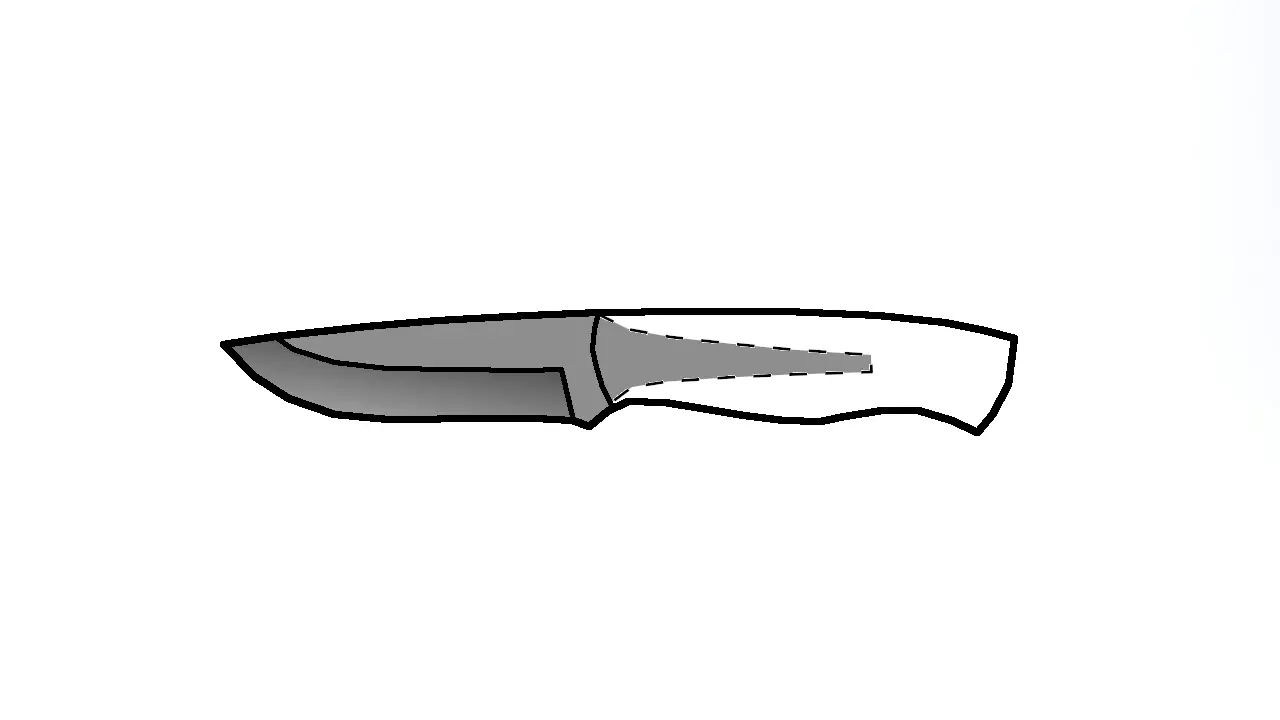
Tapered tang, a type of partial tang that is sometimes called narrowing tang, starts nearly as wide as the blade but continually tapers off as it gets nearer and nearer to the end.
Advantages
There are many advantages to tapered tang, including lower material costs (which often translate to lower consumer prices), less weight, good balance, and reasonable stability.
Disadvantages
While there are many advantages to tapered tang, the fact is, the gradual tapering of the tang often compromises its strength and durability. This tang design is excellent in many ways, but it also creates stress points near the bolsters and overall isn’t great for intensive tasks.
Construction Method
Knifemakers grind down tapered tang into the desired shape and then use various methods to attach the handle material. Tapered tang narrows in height, but it also typically narrows in width as well.
Uses
Knives with tapered tangs are great for instances where the weight of the knife plays a role. Budget knives and ones meant for decorative or light use purposes also commonly get tapered tang because of the lower price due to less material needed.
Rat-Tailed/Stick Tang
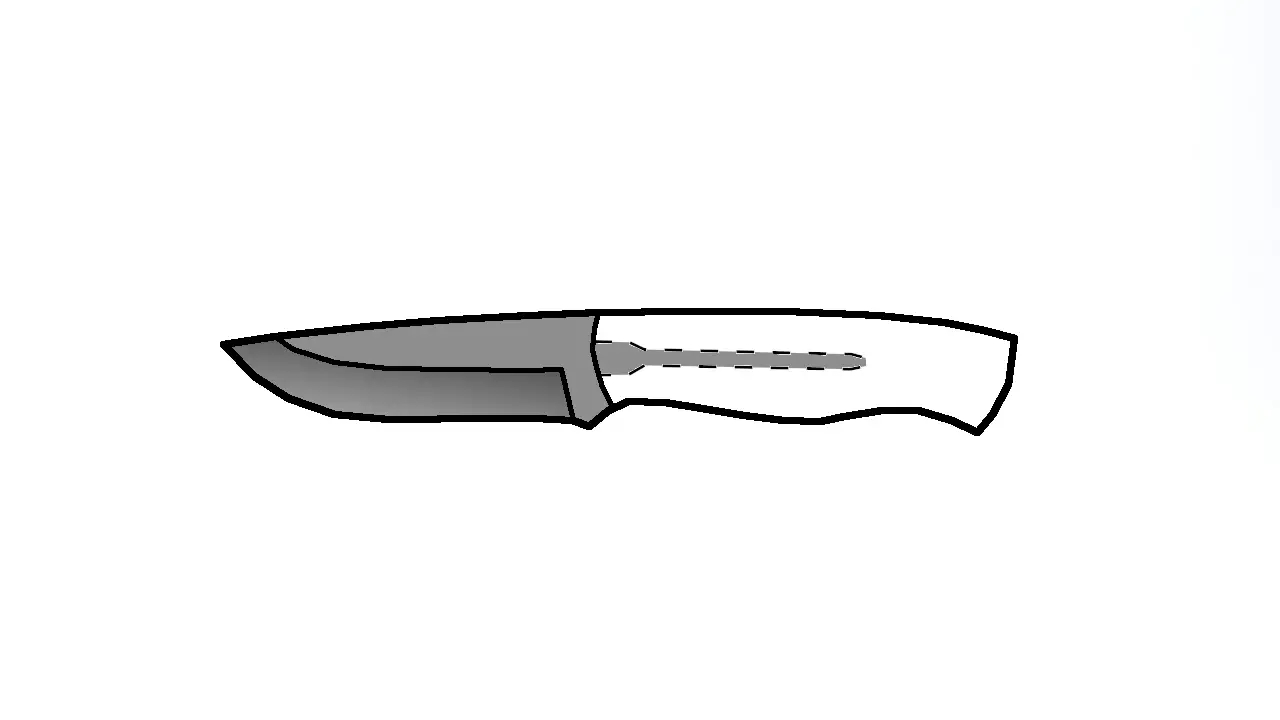
Rat-tailed tang has a fascinating design that abruptly narrows right where the knife’s blade becomes tang. This design gives the rough appearance of a rat where the blade is the rat’s body, and the tang is its tail.
Advantages
While rat-tailed tang is far from perfect, there are a few advantages to it. The most significant benefit of rat-tailed tang is that it doesn’t weigh very much, it uses less material, and it’s inexpensive.
Disadvantages
The primary disadvantage to rat-tailed tang is its lack of strength. The tang is simply so thin that it doesn’t typically provide any level of durability or strength that you need to complete tasks that are even slightly difficult.
Construction Method
Rat-tailed tang knives are made by grinding down the tang until it is long and slim, much like its namesake. It is usually attached to the handle material using rivets, epoxy, or a threaded pommel on the butt of the knife.
Uses
For most knives, rat-tailed tang is probably not the best option. Rat-tailed tang is good for decorative knives, knives that you don’t intend to use very often, and cheap knives that you just need to beat up or use for a task that will destroy the blade.
Some well-made rat-tailed tang knives are suitable for everyday carry, cooking, or other tasks that don’t demand a lot from the knife in terms of durability and strength.
Push Tang
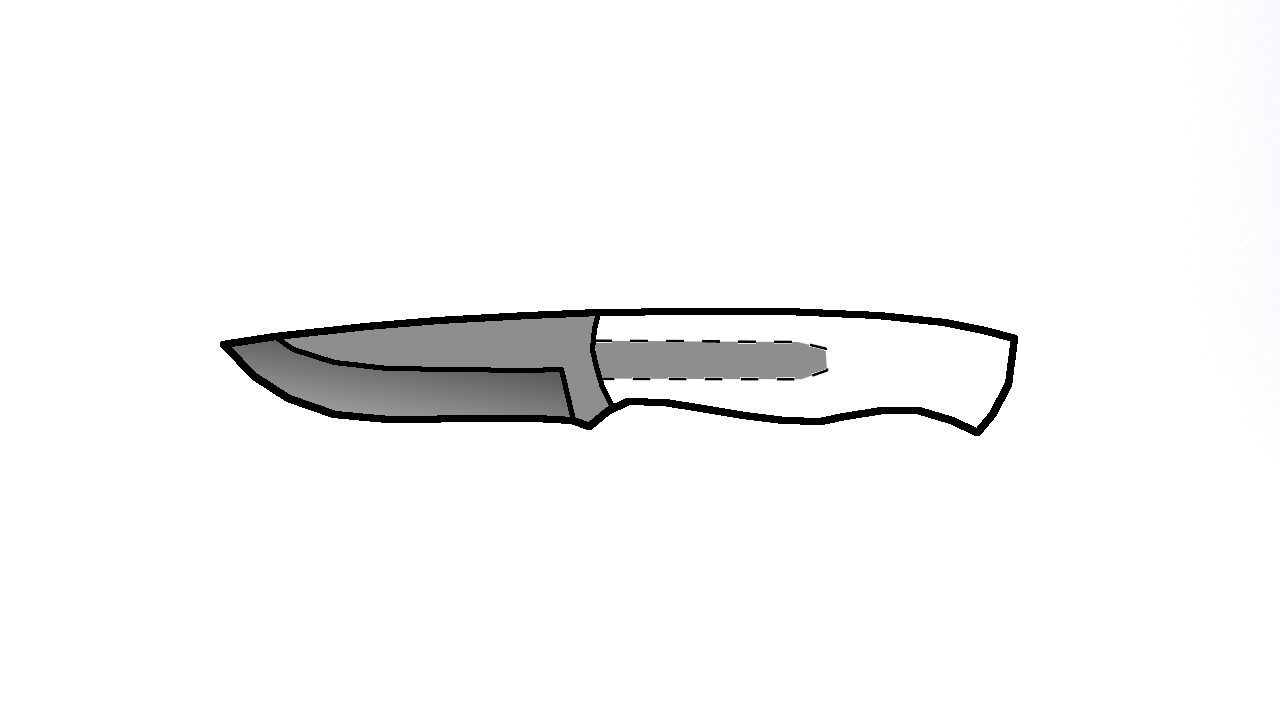
Pushed tang is nearly identical to partial tang, but its construction process is what primarily sets it apart.
Advantages
The two primary advantages of push tang are that it doesn’t weigh that much and is typically inexpensive. Both of these pros are because push tang usually only extends partially into the handle, so it uses less material and cuts down on cost and weight.
Disadvantages
Push tang knives have a few disadvantages, including the possibility of the tang separating from the handle and the lessened strength that inherently comes with a partial tang.
Construction Method
The way that knifemakers construct push tang knives is what sets them apart from a regular partial tang knife. Push tang knives are typically made by inserting the tang into a premade handle and holding it in place using strong epoxy.
Uses
Push tang knives are often associated with being cheap and not very good, and while this is true most of the time, you can still find quality push tang knives if you look in the right places. Push tang knives are ideal for non-intensive tasks where a heavy-duty knife isn’t required, such as light everyday carry or simple tasks around the house.
If you enjoyed this article about all about the different types of knife tang, make sure to check out a few of my favorite knives of all time that I’m sure you’ll enjoy as well:
